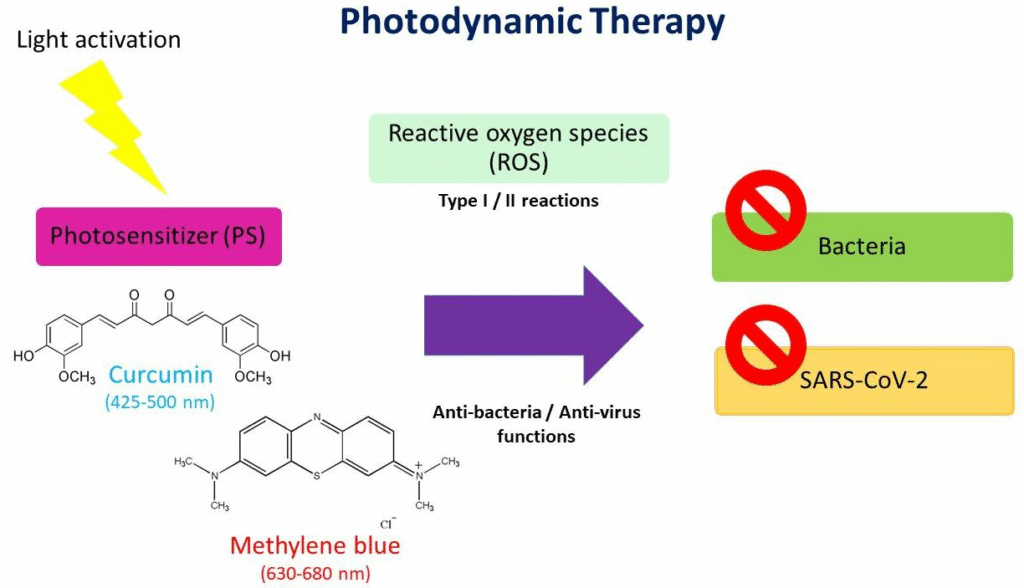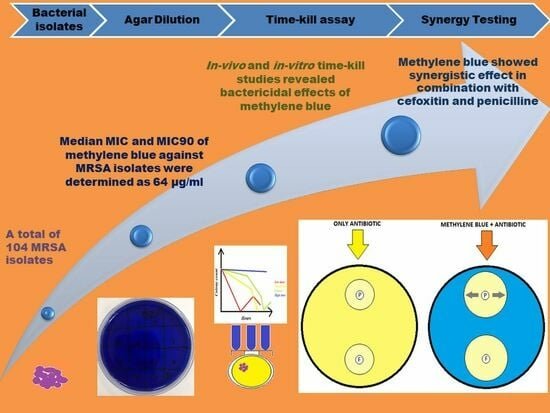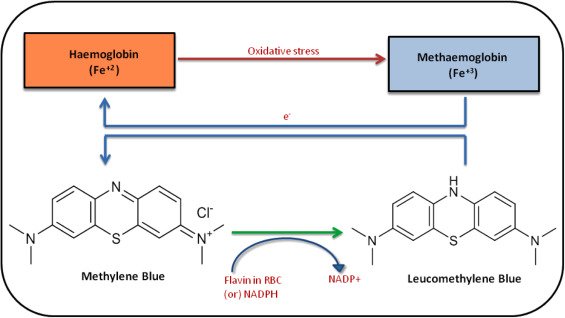
Have you ever considered the potential of Methylene Blue beyond its traditional uses?
Introduction to Methylene Blue
You may have come across Methylene Blue in various contexts, perhaps as a dye or a diagnostic tool. However, this compound has more to offer than its color and visibility within biological systems. Methylene Blue, with its deep blue hue, has been rediscovered in recent years for its antimicrobial properties, making it a subject of great interest in the medical and scientific communities. Its journey from a simple dye to a promising antimicrobial agent reflects both the evolution of medical science and the necessity for new treatments in an era of increasing antibiotic resistance.
The Chemical Nature of Methylene Blue
Chemical Composition
Methylene Blue is a synthetic compound, chemically known as thionine. As you look closely at its structure, you will find a complex arrangement of carbon, hydrogen, nitrogen, and sulfur atoms. The precise chemical formula is C16H18ClN3S, characterized by its distinctive blue color due to its molecular structure. This arrangement affords Methylene Blue not only its dyeing capabilities but also its bioactive properties that are increasingly relevant in antimicrobial treatments.
Mechanism of Action
The antimicrobial action of Methylene Blue is primarily rooted in its ability to induce oxidative stress in microbial cells. It acts by generating reactive oxygen species (ROS) upon exposure to light, creating an environment that is detrimental to living pathogens. The resulting oxidative damage can disrupt various cellular functions in bacteria, fungi, and even some viruses, highlighting Methylene Blue’s versatile role in combating infections.

Historical Context
Early Uses of Methylene Blue
Originally synthesized in the 19th century, Methylene Blue was employed as a textile dye before its deployment in biological sciences. Its initial journey into the medical field began as a treatment for malaria and various urinary tract infections. Its antifungal and antiseptic properties garnered attention, leading to its use in surgical applications and as a diagnostic agent in laboratories.
Modern Rediscovery
With the emergence of antibiotic resistance as a global health crisis, researchers revisited Methylene Blue, investigating its effectiveness against resistant strains of bacteria. The renewed interest in this old compound underscores the ongoing search for innovative treatments in microbiology. You may find it intriguing how historical research has paved the way for contemporary applications.
Mechanisms of Antimicrobial Activity
Photodynamic Therapy
One of the most promising applications of Methylene Blue is in photodynamic therapy (PDT). This technique combines the administration of Methylene Blue with light exposure, producing localized oxidative stress that selectively targets pathogenic cells. Studies have shown that this method enhances the compound’s efficacy against various microbial infections, including antibiotic-resistant strains.
Inhibition of Biofilm Formation
Biofilm formation is a significant challenge in treating bacterial infections. Methylene Blue has shown promise in inhibiting the development of biofilms, which are protective structures that bacteria form to shield themselves from the host immune system and antibiotic treatment. By disrupting the biofilm matrix, Methylene Blue may enhance the susceptibility of bacterial colonies to antibacterial agents.
Synergistic Effects with Other Antimicrobials
Research indicates that Methylene Blue may work synergistically with other antimicrobial agents, such as antibiotics. When used in conjunction with traditional treatments, it has been reported to enhance overall efficacy, thereby helping to combat multidrug-resistant bacteria. This combination therapy presents an exciting avenue for increasing treatment options in resistant infections.

Applications in Medicine
Treatment of Infections
The potential of Methylene Blue in treating infections extends across various types of pathogens, including bacteria, fungi, and protozoa. Your understanding of its versatility is critical, especially as such infections often present considerable treatment challenges.
Bacterial Infections
-
Gram-positive Bacteria: Methylene Blue has been tested for its capacity to combat Gram-positive bacteria, exhibiting significant bactericidal effects. Its ability to penetrate bacterial membranes allows it to disrupt cellular processes effectively.
-
Gram-negative Bacteria: While Gram-negative bacteria possess protective outer membranes, studies indicate Methylene Blue’s capacity to challenge such defenses. Its ability to target metabolic pathways within these cells provides reassurance regarding its effectiveness.
-
Antibiotic-Resistant Strains: One of the most crucial benefits of Methylene Blue is its potential against antibiotic-resistant strains, an issue continuing to plague the healthcare sector. Research studies have demonstrated that it can be effective against Methicillin-resistant Staphylococcus aureus (MRSA) and other resistant microorganisms.
Antifungal Properties
In addition to antibacterial activities, Methylene Blue has shown antifungal properties, providing an avenue for treating fungal infections. Its efficacy against species like Candida and Aspergillus adds a valuable tool for healthcare providers, especially given the rising incidence of invasive fungal diseases.
Viral Infections
Interestingly, Methylene Blue exhibits antiviral activity, particularly against certain viruses such as HIV and the influenza virus. Its mechanism of inducing oxidative stress has been linked to disrupting viral replication, although more research is necessary to better understand the optimal applications in this area.
Safety and Side Effects
Toxicology
Even as you consider the prospects of Methylene Blue’s utilization in antimicrobial treatments, discussing safety is paramount. Toxicology studies indicate that Methylene Blue possesses a favorable safety profile when used appropriately. However, the risk of methemoglobinemia and other adverse effects must be acknowledged.
Recommended Dosage
It is crucial to adhere to recommended dosages to minimize potential side effects. Consult up-to-date guidelines when considering the use of Methylene Blue in antimicrobial treatments. For most therapeutic applications, dosages remain relatively low, which significantly diminishes the risk of toxicity.
Contraindications and Precautions
Methylene Blue is contraindicated in certain populations, including individuals with glucose-6-phosphate dehydrogenase deficiency, as it can lead to hemolytic anemia. As with any therapeutic agent, ensure comprehensive patient evaluations are conducted before administration.

Research and Future Directions
Current Research
Ongoing investigations aim to illuminate the full spectrum of Methylene Blue’s antimicrobial properties. Studies focusing on its action against biofilms, its effectiveness in combination therapies, and its role in treating various infections are critical in establishing a broader consensus on its clinical use.
Future Applications and Studies
The future of Methylene Blue in antimicrobial treatments is promising. Advancements in formulations, such as nanoencapsulation or combination therapies, may enhance its bioavailability and efficacy. As research evolves, you may anticipate exciting findings that will lead to revised treatment protocols.
Conclusion
In summary, Methylene Blue’s multifaceted role in antimicrobial treatments presents an intriguing landscape for future exploration. From its historical applications to its modern-day relevance, you can appreciate its potential to address some of the most pressing challenges in contemporary medicine. As the search for effective antimicrobials continues, Methylene Blue stands out as a promising candidate deserving of further research and clinical consideration.
Your understanding of this compound’s properties is vital in fostering a broader dialogue about the ways we can innovate within the field of antimicrobial treatments. Methylene Blue may not have the spotlight it deserves in conversations around drug efficacy, but its resurgence could be a crucial element in shaping effective strategies against resistant pathogens.
By emphasizing the continued exploration of Methylene Blue, you can play a role in advocating for a deeper investigation into traditional compounds that may hold the key to modern medical challenges. With antibiotic resistance on the rise, the time is ripe for thinking outside the box and reconsidering the applications of compounds that have stood the test of time.
